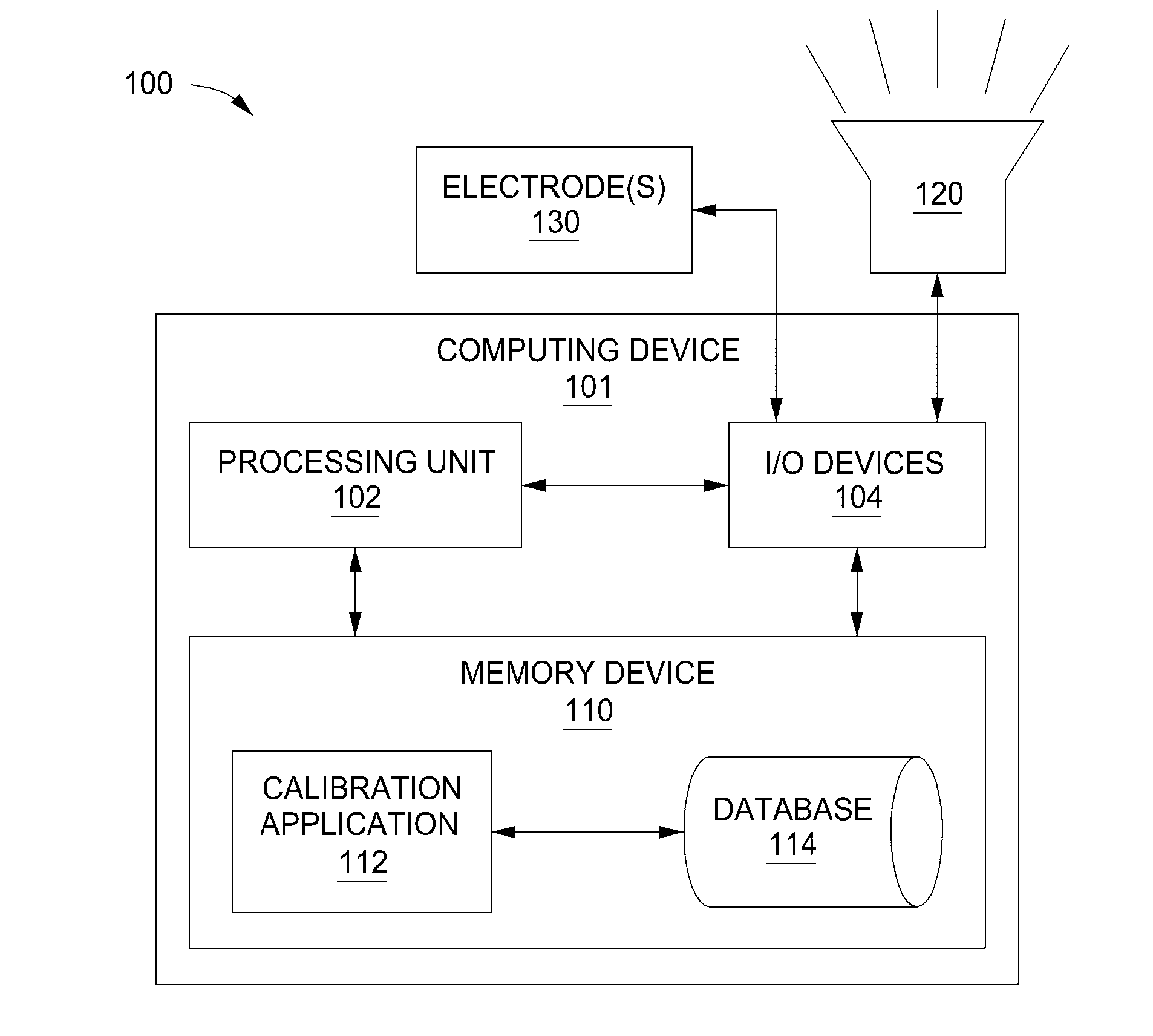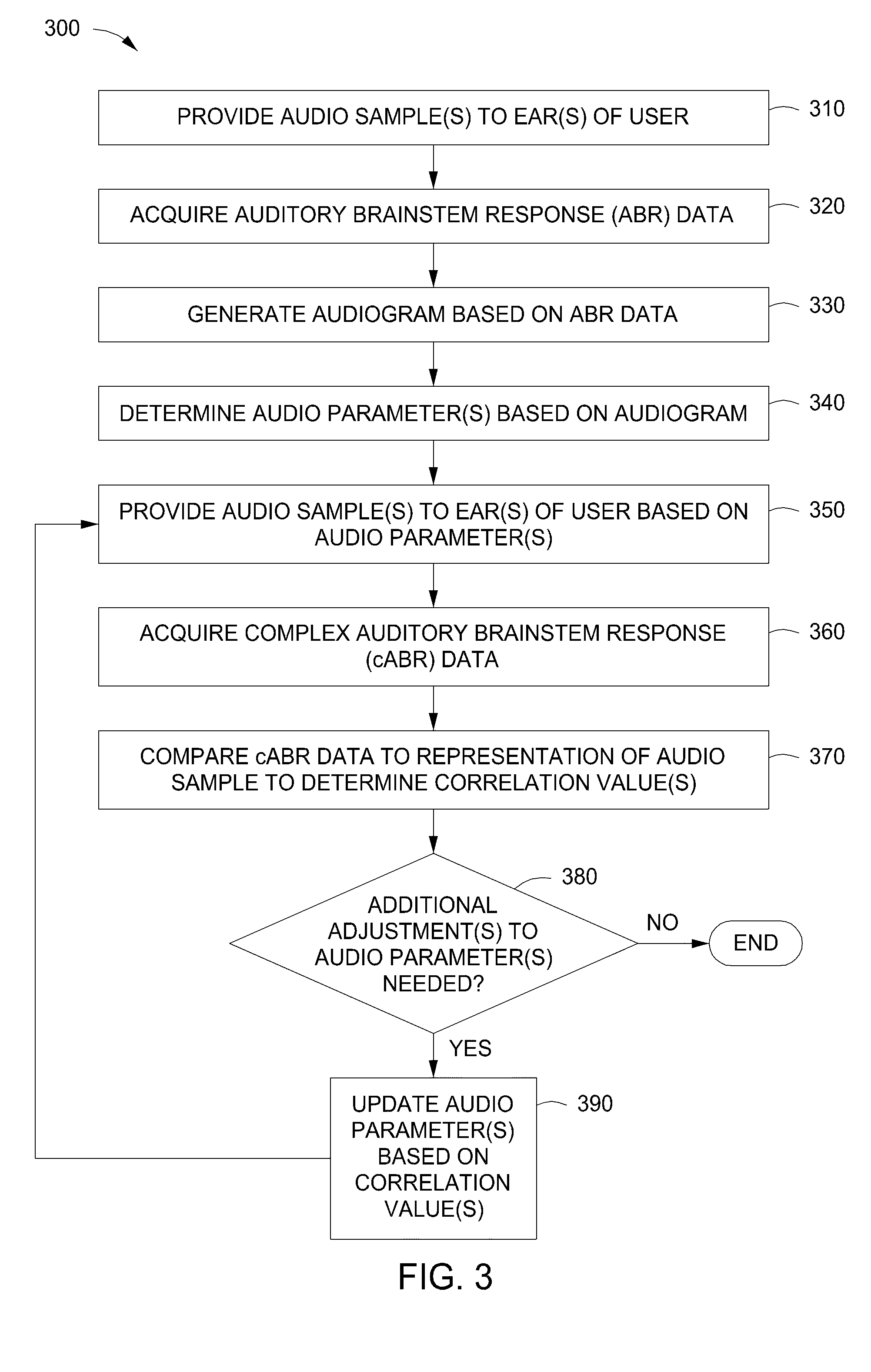Automatic sound equalization device
a sound equalization device and automatic technology, applied in the field of audio signal processing, can solve the problems of relying on user input, many users are unable to properly utilize such settings to configure the outputs of their audio devices, and users may spend a significant amount of time adjusting different equalization parameters without actually finding a combination of settings that properly
- Summary
- Abstract
- Description
- Claims
- Application Information
AI Technical Summary
Benefits of technology
Problems solved by technology
Method used
Image
Examples
Embodiment Construction
[0003]The various embodiments relate generally to audio signal processing and, more specifically, to sound equalization devices.
[0004]2. Description of the Related Art
[0005]One problem with many audio devices is the reliance on user input for adjusting the characteristics of the sound outputted by the audio device. In particular, a conventional audio device typically relies on a user to manually adjust multiple sound equalization parameters in order to configure the output of the audio device to suit the hearing characteristics of the user. For example, many mobile devices provide users with an option to adjust the relative gains of several different frequency bands (e.g., low frequency bands, mid-range frequency bands, and high frequency bands).
[0006]However, while many audio devices provide users with options to fine tune sound output via multiple settings, many users are unable to properly utilize such settings to configure the outputs of their audio devices to match their hearin...
PUM
 Login to View More
Login to View More Abstract
Description
Claims
Application Information
 Login to View More
Login to View More - R&D
- Intellectual Property
- Life Sciences
- Materials
- Tech Scout
- Unparalleled Data Quality
- Higher Quality Content
- 60% Fewer Hallucinations
Browse by: Latest US Patents, China's latest patents, Technical Efficacy Thesaurus, Application Domain, Technology Topic, Popular Technical Reports.
© 2025 PatSnap. All rights reserved.Legal|Privacy policy|Modern Slavery Act Transparency Statement|Sitemap|About US| Contact US: help@patsnap.com



